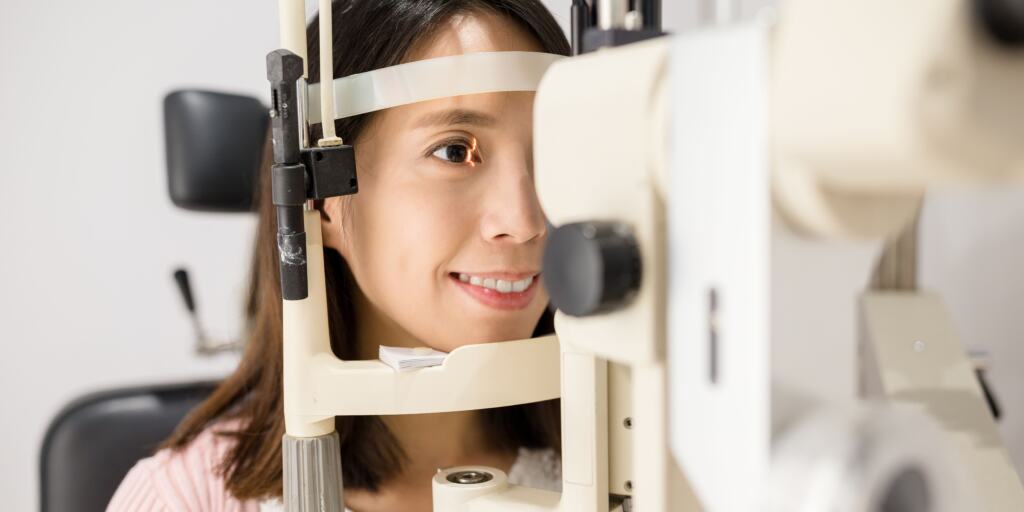The degenerative eye disease glaucoma is brought on by an increase in intraocular pressure. Although this ailment has the potential to impair eyesight, it is treatable with the aid of drugs like eyedrops. For the treatment of glaucoma, many types of eyedrops are offered in Singapore. Which are:

- Analogs of Prostaglandins
Eyedrops known as prostaglandin analogs lessen the formation of fluid in the eye. In Singapore, these are the eyedrops that are most frequently used to treat glaucoma. They function by enhancing fluid drainage from the eye, which lowers pressure buildup. Xalatan, Travatan, Lumigan, and Vigamox are examples of popular brands.
- Beta-blockers
Another class of eyedrops that lessen the amount of fluid produced in the eye is beta-blockers. They function by preventing the eye’s response to specific hormones. Timoptic, Betoptic, and Istalol are common brands.
- Alpha-agonists
Another class of eyedrops that lessen the amount of fluid produced in the eye is alpha-agonists. They function by reducing the activity of specific ocular receptors. Iopidine and Alphagan are popular brands.
- Inhibitors of carbonic anhydrase
Eyedrops that inhibit carbonic anhydrase lower the amount of fluid produced in the eye. They function by preventing the enzyme from contributing to the production of ocular fluid. Trusopt and Azopt are popular brands.
- Miotics
Eyedrops called miotics enhance the amount of fluid that drains from the eye. They function by tightening the pupil, allowing more fluid to exit the eye. Isopto Carpine and Pilocarpine are popular brands.
- Multipurpose eyedrops
Eyedrop combinations consist of two or more of the aforementioned eyedrops. They are used to treat glaucoma when other medications are ineffective. Cosopt, Combigan, and Simbrinza are popular names.
These are the various glaucoma eyedrop varieties that are offered in Singapore. The doctor will choose the best eyedrops based on the condition’s severity and the specific requirements of the patient.
Other glaucoma therapies, including laser and surgical techniques, are also offered in Singapore in addition to eyedrops. A laser beam is used during laser therapy to lower intraocular pressure in a non-invasive manner. There is no requirement for anesthesia and this can be done as an outpatient procedure. The eye’s drainage ducts are widened during surgery, which is performed in a hospital setting.
If untreated, glaucoma is a dangerous disorder that can cause eyesight loss. The numerous treatments that are offered to patients in Singapore should be made clear to them. Glaucoma can be adequately managed and visual loss can be avoided with the aid of drugs and other treatments.
- Describe glaucoma.
The degenerative eye disease glaucoma is brought on by an increase in intraocular pressure. If it is not treated right away, permanent visual loss may result.
- Who is susceptible to glaucoma?
The chance of developing glaucoma is higher in persons over the age of 40, those with a family history of the disease, and those who have specific medical disorders, such as diabetes.
- What glaucoma signs and symptoms are there?
Peripheral vision loss is the most typical glaucoma symptom. Eye pain, redness, haloes surrounding lights, and headaches are some more symptoms that could exist.
- Just how is glaucoma handled?
Typically, eyedrops, laser therapy, and/or surgery are used to treat glaucoma. The severity of the ailment and the specific requirements of the patient will determine the type of treatment.
- Are there any adverse effects to glaucoma medications?
Certainly, glaucoma therapies have adverse effects, and they differ depending on the type of treatment. Eye stinging or burning, vision blurring, and dry eyes are typical adverse effects.
- What kinds of eyedrops are available for treating glaucoma?
Prostaglandin analogs, beta-blockers, alpha-agonists, carbonic anhydrase inhibitors, miotics, and combination eyedrops are among the various types of eyedrops used to treat glaucoma.
- How frequently should I apply the eyedrops?
It’s crucial to use the eyedrops according to your doctor’s directions. In general, it is advised to apply the eyedrops as directed each day.
- Are there any more glaucoma therapies available?
Certainly, there are additional glaucoma therapies available, including laser therapy and surgery. Depending on how severe the disease is, your doctor might advise one of these therapies.
- How can glaucoma be avoided?
Unfortunately, glaucoma cannot be completely avoided. Regular eye exams, however, can help identify the disease early and lower the chance of vision loss.
- Is glaucoma a permanent condition?
No, medicines and other therapies can help you manage your glaucoma. Vision loss can be avoided with quick medical intervention.
- Are glaucoma patients given any special considerations?
Indeed, people with glaucoma should exercise particular caution when engaging in activities that put a lot of pressure on the eyes, such as reading, using a computer, or operating a vehicle.
- What actions should I take if I believe I have glaucoma?
Seeing your doctor as soon as you suspect you may develop glaucoma is crucial. The likelihood of maintaining vision improves with an earlier diagnosis of the illness.
- Are there any resources in Singapore for glaucoma patients?
Absolutely, there are numerous organizations in Singapore that offer assistance to people with glaucoma. The Glaucoma Society of Singapore and the Glaucoma Support Group are two examples of these.

